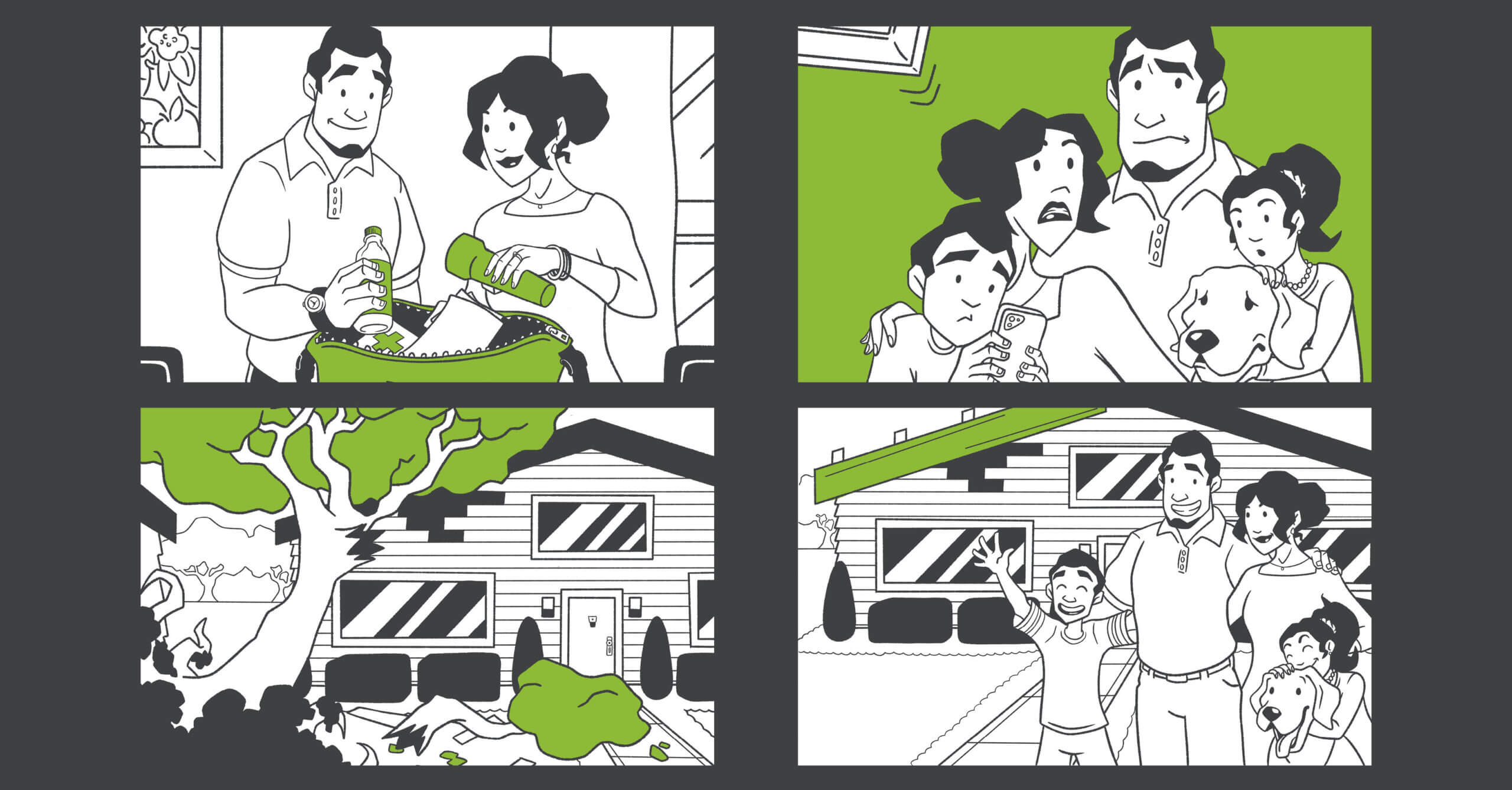
Hurricane Safety Tips Through the Storm: A Family’s Journey to Resilience
June 18, 2025 — Disaster insights
Hurricanes don’t just happen in a single moment—they unfold over days, often with uncertainty, tension, and critical decisions at every stage. This four-part series follows fictional homeowners Marco and Elena and their two children Luca and Maya. Each vignette offers a realistic glimpse into what preparedness, response, and recovery look like in practice, using the fictional Riveras as a lens to highlight key actions and insights. Use their made-up experience as a guide to strengthen your own storm readiness—from the first forecast to final repairs.
THE WATCH: TIME TO PREPARE
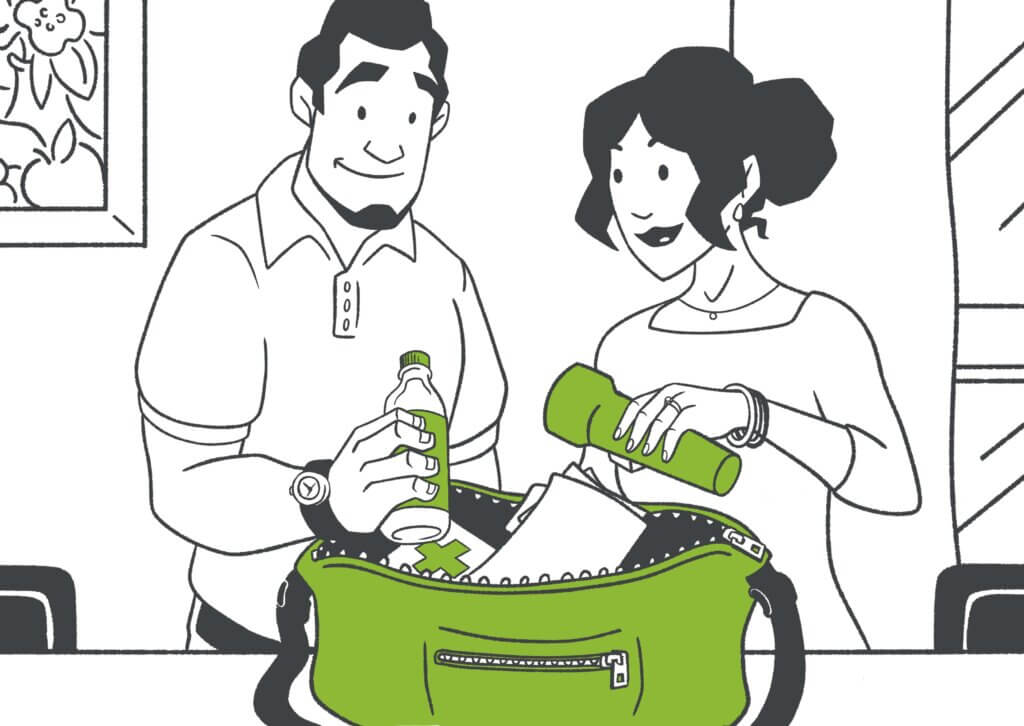
Three days before Hurricane Dara’s expected landfall, the Rivera household sprang into action. The sky was still blue, but the local news anchors were already using words like “rapid intensification” and “mandatory evacuation zones.” Dara was strengthening quickly, and a hurricane watch had just been issued.
Elena pulled out the hurricane preparedness checklist: bottled water, flashlights, first-aid supplies, important documents, and extra pet food for their golden retriever Tilly. She knew from past storms how crucial it was to get ahead of the rush.
Marco fueled the car and brought in patio furniture. As a small business owner, he balanced storm prep at home with securing his shop and checking insurance coverage.
Their son Luca used his tech skills to double-check supply lists. His younger sister Maya focused on the essentials too—snacks and keeping Tilly calm.
It was a coordinated effort that didn’t happen by accident. The Riveras had a plan—and when the watch was issued, they knew it was time to put it in motion.
Hurricane Watch vs. Warning: Know the Difference
A hurricane watch means conditions are possible in a specified area; a warning means dangerous conditions are expected, according to the National Oceanic and Atmospheric Administration (NOAA). Under a watch, forecasters predict sustained winds higher than 74 mph could happen in the coming 48 hours. A warning means conditions are expected within 36 hours.
Tip: As forecasts become more serious—moving from a watch to a warning—your window to make important preparations closes quickly. One key step you can take before a storm is even forecasted is to review your insurance coverage
Talk to your insurance representative about any additional coverages you may need, like flood insurance, so your property is well protected before a storm is forecasted.
THE WAIT: STAYING SAFE DURING THE STORM
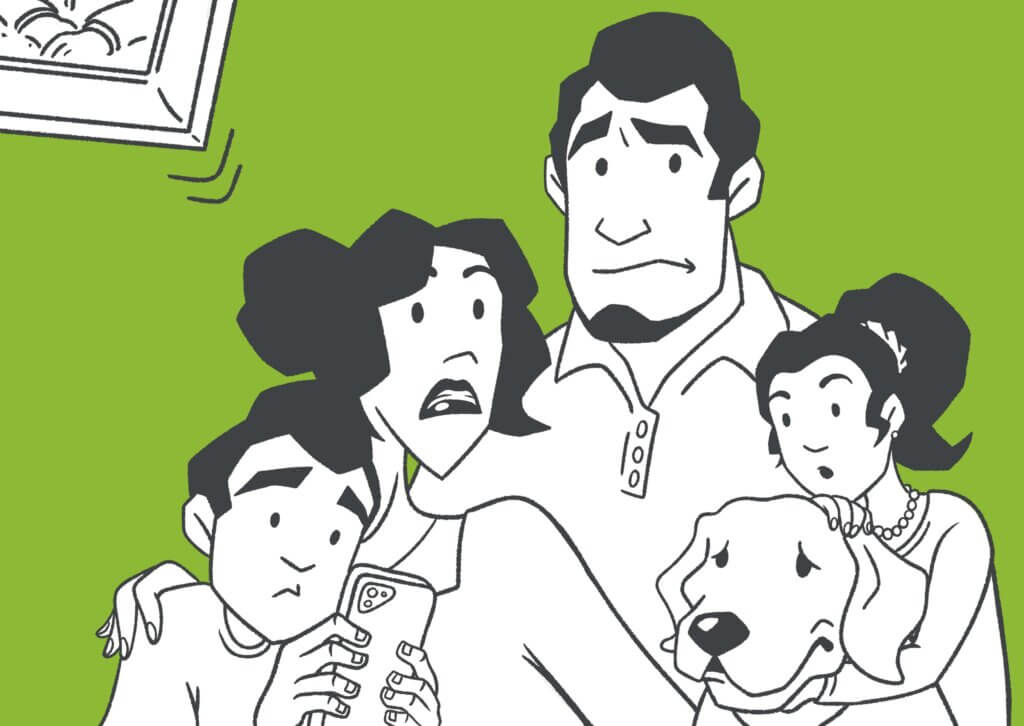
As Hurricane Dara roared ashore, the Rivera family sheltered in place. They had checked and double checked their local government website to confirm that their residence was not under evacuation. With no evacuation orders for their area, they chose the safest spot in their home to ride out the storm—a windowless, interior hallway on the lowest level.
The power had gone out an hour earlier. The four huddled together with their essential supplies: water, non-perishable food, flashlight, batteries, first aid kit, medications, important documents, and a battery-powered weather radio. Maya held tightly to their dog Tilly, trying to soothe her barking as the gusts whirled. Blankets and pillows were ready if the storm raged through the night, and their cell phones and backup power sources were charged.
As wind rattled the house from the unmistakable force of a major storm making landfall, something slammed onto the roof. Even as the winds started to relent, they would have to wait until the storm fully passed before it would be safe to check. As Flordia natives, Marco and Elana both knew that the calm during the eye of the strom is followed by dangerous winds. They remained where they were awaiting the “all-clear” from local officials before leaving their shelter.
Hurricane Safety Tip: Closing Interior Doors
Closing all interior doors during a hurricane can reduce the extra load on the roof by 30 percent according to the Insurance Institute for Business and Home Safety (IBHS).
Read more about how to prepare and protect your home from hurricane damage.
Tip: Know your safe zones before a storm hits—interior rooms with no windows are best if you don’t have a safe room.
THE AFTERMATH: FILING A CLAIM
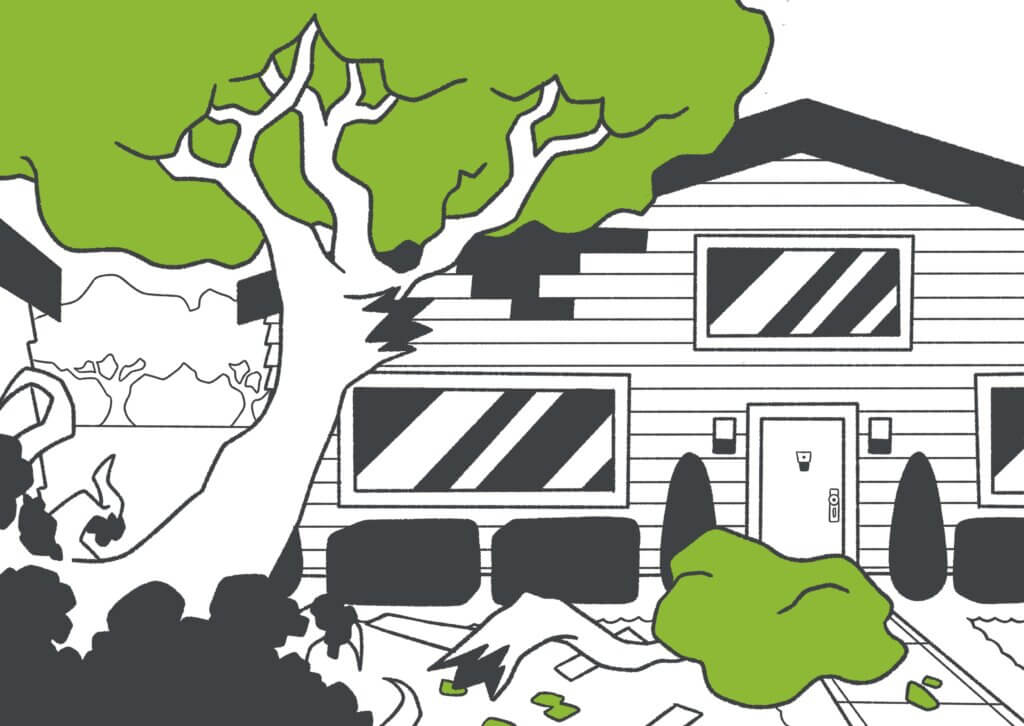
The morning after Hurricane Dara, the skies were clear but now came the reality of recovery. A large tree had fallen across the Riveras’ backyard. Shingles were scattered across the lawn. Water seeped in through the back door, soaking the sunroom carpet.
They would need to file a claim.
Marco stood quietly at the doorway, surveying the damage. Elena opened her charged laptop without hesitation and logged into their insurance portal. They both knew the next step: document everything before making any repairs or cleanup. Marco took wide shots of the roof and yard. Luca helped capture photos of water damage on his phone.
When Elana reached out to the insurance company, she was offered mitigation services to help prevent further damage. She accepted, and they sent a company to dry out the water in the sunroom and tarp the roof. With roof damage and water inside their home, the family would need to temporarily relocate while repairs were underway. Fortunately, their home insurance policy’s additional living expense coverage could help address their hotel and meal costs during repairs.
Stay Alert: Monitor Conditions Before Traveling Post-Storm
Even if the storm center has passed, lingering rain and changing conditions can continue to worsen situations. Continue to listen to local officials, especially if you plan to leave your neighborhood.
From staying safe to starting the recovery process, follow this guide to navigate the hours after a storm: What to do after a hurricane makes landfall.
Tip: File your claim as soon as it is safe to do so and keep receipts for any temporary repairs.
THE RECOVERY: THREE DAYS LATER
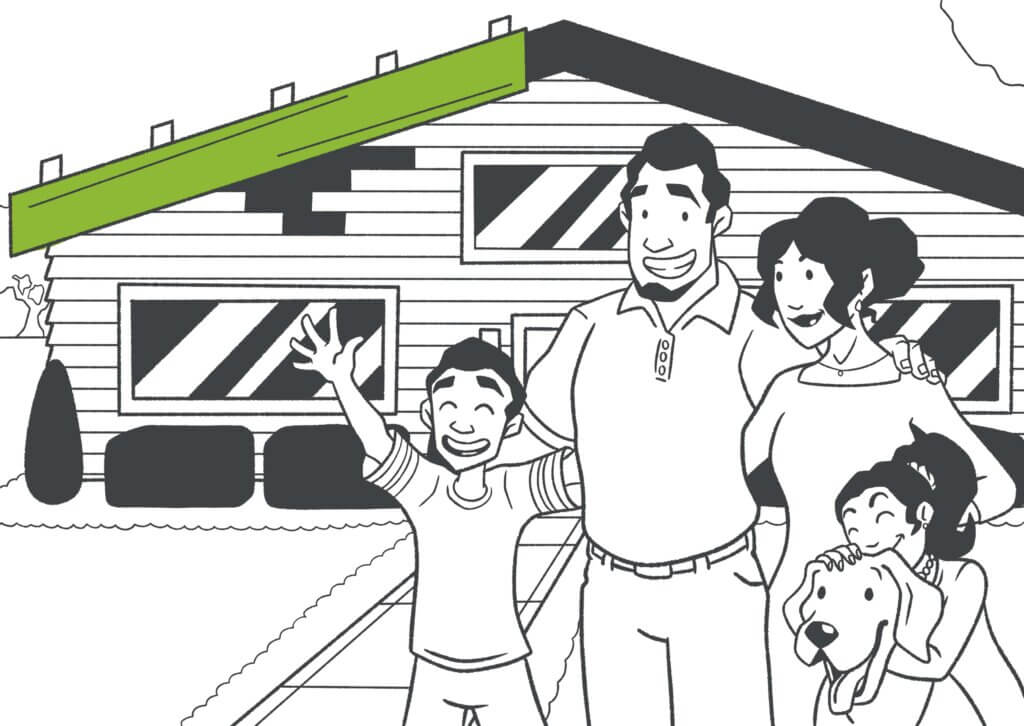
Three days after Hurricane Dara, progress was underway.
The insurance adjuster arrived that morning to assess the damage firsthand. Marco walked him through the property, pointing out water stains, missing shingles, and the temporary tarp covering roof damage. Because he had documented everything right after the storm, the process moved efficiently.
Inside, Elena tracked their claim online. The insurance dashboard showed an initial payment had been issued for mitigation costs and getting repairs started. With a detailed home inventory already in place, the process of replacing damaged personal property would be fast and straightforward.
Elena also took advantage of her insurance provider’s managed repair program to save the hassle of vetting and hiring a contractor on her own.
Piece by piece, the Riveras were moving forward. Recovery would take time—but preparation, planning, and support made each step more manageable.
Filing a Claim
If a storm has caused damage to the home or property, it’s often best to file your claim as soon as it’s safe to do so. Understanding the claims process is one way you can prepare before you ever need to file one. Read more frequently asked questions during a claim.
Tip: A little planning before a storm—like keeping a digital home inventory—can make recovery easier.
KEY TAKEAWAYS
When Hurricane Dara approached, the Rivera family put their preparedness plan into action—showing how early steps, clear communication, and the appropriate insurance coverage can make all the difference during hurricane season.
Quick Recap
- Don’t wait for a warning to get prepared—a watch means it’s time to act.
- Know your safe spaces, gather supplies early, and make a home inventory before you ever need one.
- File your claim quickly and follow the guidance from your claims specialist.
- Recovery takes time, but preparation makes it manageable.
Get hurricane-ready today with our preparedness checklist and claims resources.
Disclaimer:
The characters and scenarios in this story are fictional and created for illustrative purposes only. Any resemblance to real people, living or dead, is purely coincidental. This content is intended to provide general information about hurricane preparedness and should not be considered professional advice. For official updates at the time of a storm, please refer to your local emergency management agency and trusted weather authorities.
